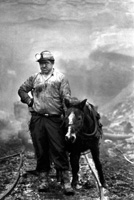Eddie Adams
Every Picture Tells A Story
Eddie Adams probably won't
tell you that he's among the most published photographers of our
time with covers of Life, Time, Vogue, Parade, Penthouse, and many others
to his credit. Or that he has been the recipient of over 500 national
and international awards, including a Pulitzer Prize in 1969. But he'll
be quick to tell you a story about getting smashed drinking wine with
Bette Davis and getting no pictures. Or how he was warned before leaving
on a plane for Zambia that he had better not board because he was at
the top of a hit list and armed men were waiting for him on the other
end. "It was cool," Adams says. "I never knew anyone
on a hit list before." |
|||
Every Picture A Story |
|||
The Press His Gallery |
|||
Back To NYC |
|||
From The Heart |
|||
Speaking His Mind |
- Log in or register to post comments







































